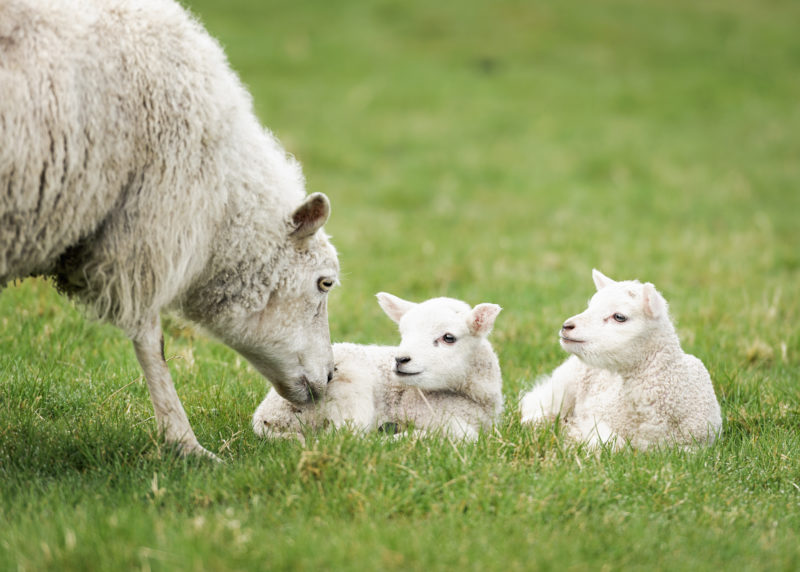As one of the first animals to be domesticated, sheep have lived alongside humans for nearly 11,000 years. Sadly, sheep and lambs have primarily been raised and used as a source of meat, wool and milk — despite the fact that they have distinctive personalities, rich emotional lives and strong family ties.
Our latest undercover investigation, the first look inside a U.S. lamb slaughterhouse, has exposed egregious abuse of lambs by the nation’s largest lamb producer (read the breaking story from The New York Times).These incredible animals deserve so much better.
Did you know February is Lamb Lovers Month? We’re putting a sweet spin on this industry-declared occasion by highlighting some of the many reasons to love lambs (and sheep), not eat them.
- Sheep have exceptional memories. They can recognize the individual faces of at least 50 other sheep — and remember them for two years. Scientists have shown that they have specialized areas in the brain for face recognition, much like humans.
- Sheep communicate. Despite the belief that animals can’t speak, sheep (and other animals) do, in fact, communicate vocally. They use different sounds to express different emotions, and also recognize emotions through facial expressions. They cry out when in pain, and — like humans — have an increase in cortisol (the stress hormone) during difficult, frightening or painful situations.
- Sheep are doting mothers. They form strong bonds with their lambs and can recognize the sound of their individual calls when they wander away.
- Sheep weren’t always wooly. Thousands of years ago, the ancestors of domestic sheep had hair (not wool), which shed naturally during the spring and summer. Today’s sheep were selectively bred for wool, which does not shed, continues to grow and can weigh the animals down, cause physical problems if they aren’t shorn on a regular basis (usually annually).
- Sheep are social. While male sheep typically hang out in herds of 5-50 sheep at a time, female sheep often live in herds of up to 100 sheep and lambs.
There are so many reasons to leave sheep and lambs out of our shopping carts and off of our plates. Please watch & share our new investigation.
Check out TryVeg.com for lots of delicious vegan recipes.



Comments 10
I love your picture of I Ewe You!
Spread this LOVE!
I just don’t understand the slaughter of any living creature when there are so many other things people can eat. I could just never put a piece of any sort of murdered animal into my mouth!!!
It breaks my heart ♥️
I agree, and why are animals killed for their fur and skins when there are so many other options for clothing and for warmth? It’s not as though our survival depends on killing animals for apparel. It is not necessity. It is frivolous vanity.
Me too 🙂 it’s heartbreaking 💔 I love lambs and I’m thinking about a petition to make them protected. I can’t stand it at Easter when people seem to think eating lamb is a tradition, really, it’s terrible.
Help animals
HEY ya’ll the world’s biggest sheep lover ,loved the article!!!!!!!!!!!!!!!!!!!!!!!!!!!!!!!!!!!!!!!
i need to meet my fellow lamb/sheep lovers!i have vowed never to eat lamb .it is a living thriving creature ,it is like if you ate a dog or cat[any beloved pet really].i am so glad i am not weird because i have billions of sheep stuffies in my room
I am a vegan since I have visited a slaughterhouse 25 years ago. I do not know how anyone could eat an animal that was abused ALL its life.
Ranay Peck. M.S.Ed, M.S.P.S.
once again, man has changed nature from beautiful and diverse to simple and suiting our own selfish needs as in #4.
“4. Sheep weren’t always wooly. Thousands of years ago, the ancestors of domestic sheep had hair (not wool), which shed naturally during the spring and summer. Today’s sheep were selectively bred for wool, which does not shed, continues to grow and can weigh the animals down, cause physical problems if they aren’t shorn on a regular basis (usually annually).”
That’s wild